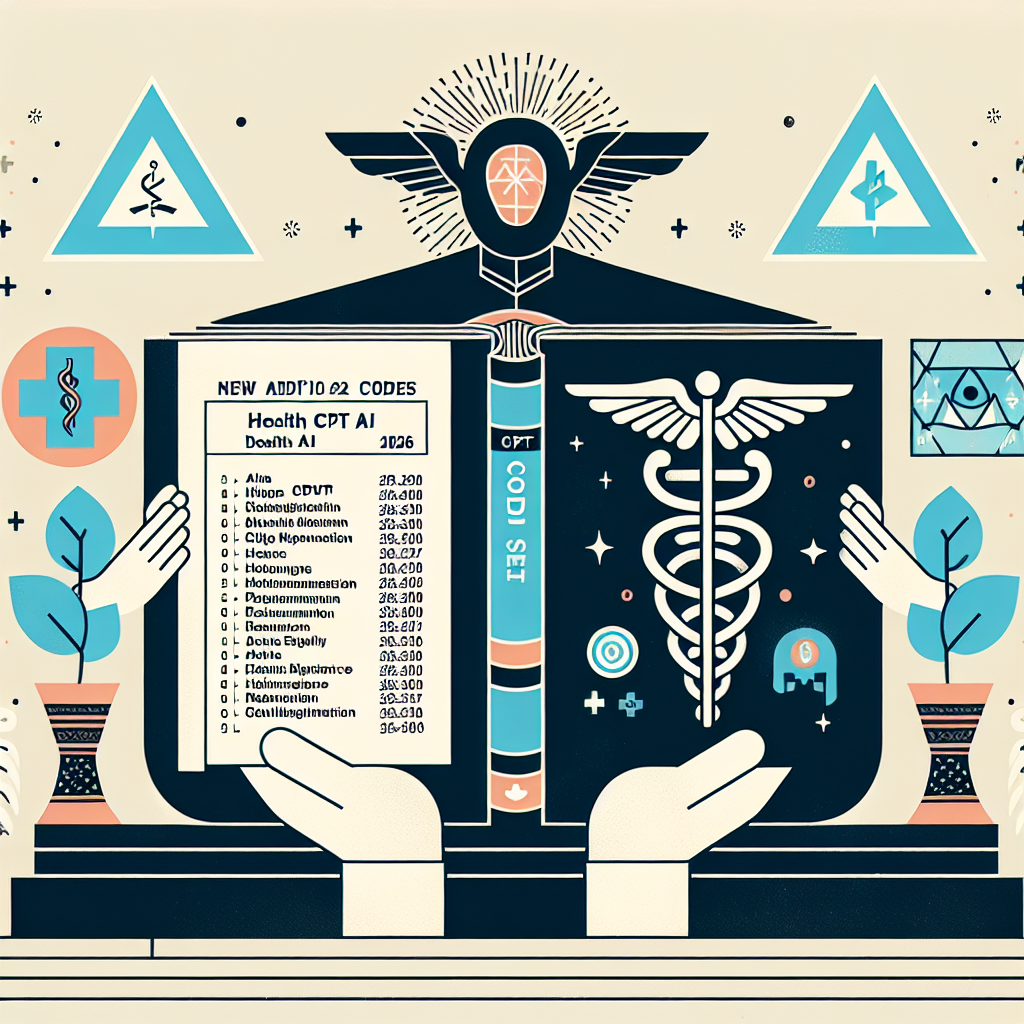
The American Medical Association (AMA) has recently unveiled the 2026 update to the Current Procedural Terminology (CPT) code set, introducing significant advancements that will enhance the documentation of technology-enabled healthcare services. This comprehensive update includes 418 changes, comprising 288 new codes, 84 deletions, and 46 revisions designed to reflect the growing intersection of healthcare and technology.
A standout feature of this update is the introduction of numerous codes specifically aimed at documenting digital health services. Among these updates, healthcare providers will now be able to accurately record shorter duration remote patient monitoring, specifically for periods lasting from two to 15 days within a 30-day timeframe. This adjustment allows for more nuanced tracking of patient care and remote monitoring management through two new codes that will outline services based on just 10 minutes of monitoring per calendar month.
Moreover, the 2026 CPT code set includes groundbreaking codes for health AI services that are designed to augment physician capabilities while improving patient care. Notably, the codes for AI-assisted assessments will cover innovative applications like the evaluation of coronary atherosclerotic plaque and perivascular fat analysis for cardiac risk assessments. These developments exemplify how the medical field is increasingly integrating artificial intelligence to enhance diagnostic accuracy and patient outcomes.
In addition to these innovations, the AMA has recognized the need for codes that support emerging digital technologies, specifically targeting services linked to multi-spectral imaging for burn wounds and tools for the detection of cardiac dysfunction. These efforts indicate a clear acknowledgment of the evolving landscape of healthcare and the significant role that advanced technology plays in patient management and treatment solutions.
The updated code set also includes 12 new codes related to hearing device services, which encompass training and support for patients utilizing personal devices to connect with their hearing aids. This addition establishes a more holistic understanding of patient engagement and care continuity through the integration of supportive technology.
Effective January 1, 2026, the new Category I CPT codes will be crucial for medical professionals as they navigate claims processes and reimbursements, especially under programs like Medicare. The uniform language of the CPT code set is essential for standardizing medical documentation across the healthcare system, ensuring that services are accurately captured and reimbursed. This structured approach is vital not only for patient care but also for the financial sustainability of healthcare practices.
However, recent statements from the Centers for Medicare & Medicaid Services (CMS) reveal a shift in their methodology regarding how they utilize CPT codes in determining the Medicare Physician Fee Schedule. CMS has expressed concerns about the reliance on the Relative Value Scale Update Committee (RUC), citing issues related to potential biases in the survey data collected for setting payment rates. This shift may impact how healthcare professionals approach the documentation and coding for services moving forward.
The introduction of AI-related CPT codes in this update signals the AMA’s proactive stance on the integration of technology in healthcare, ensuring that such innovations are formally recognized within the coding framework. This not only helps in streamlining the documentation process but also paves the way for reimbursement structures that fairly reflect the value of AI-enhanced medical services. As the healthcare sector continues to embrace advanced technologies, staying informed about coding changes will be paramount for physicians, practices, and organizations aiming to leverage innovations for improved patient care.

Leave a Reply